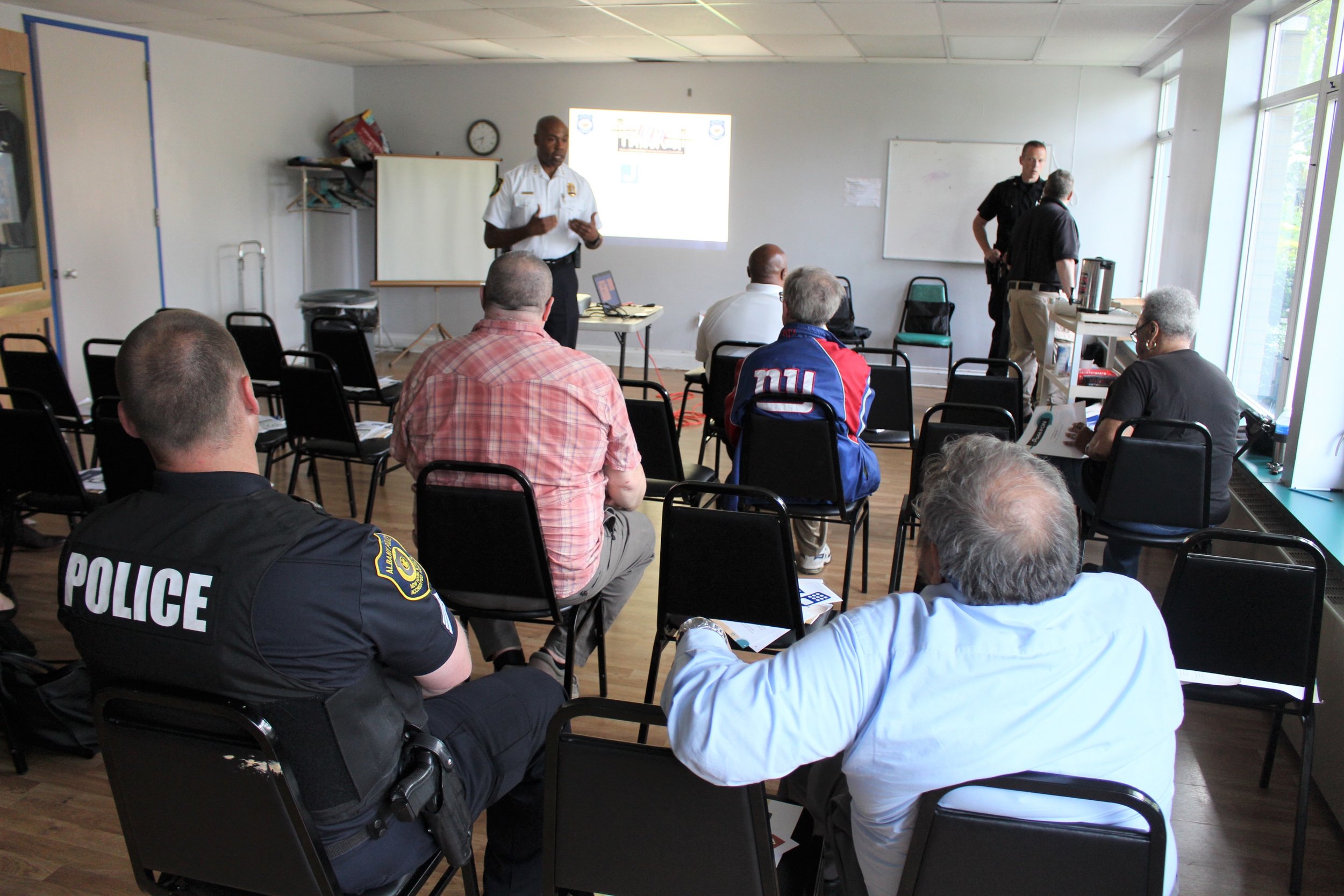As part of our ongoing national study to learn more about community engagement, Policing Project staff members recently traveled to Albany, New York with our partners from Latham and Watkins to learn about the Albany Community Police Advisory Committee (ACPAC).
ACPAC’s Function and Structure
Since its creation in 2009, ACPAC has endeavored to improve relationships between police and Albany residents, and to increase the community’s involvement in the policy, training, and organizational decision-making of the Albany Police Department (APD). It is designed to be, as described in its mission statement, “a catalyst for organizational change.”
ACPAC has up to 25 members, most of whom are appointed by the Common Council representing Albany’s 15 wards. The mayor and the Common Council president each appoint one person. The police chief appoints four, and up to four members are appointed by a subcommittee of ACPAC members rather than by an elected or appointed official. This appointment process enables the board to maintain some independence from the Police Department. Although independence from the department is naturally important, we did hear concerns that too much distance from the Police Department could lessen the board’s ability to effectively advise the chief.
ACPAC facilitates community involvement with the APD by hosting public meetings, where residents have the opportunity to discuss community issues, as well as public forums, where residents can express their thoughts or concerns about a particular topic. ACPAC sets the agenda and selects the topics for these meetings. Past forums have focused on body cameras, red-light cameras, opioid abuse, and traffic safety.
ACPAC in Action
One of ACPAC’s most important functions is its role in developing APD policy and initiatives that reflect the concerns of the community. Recently, ACPAC helped craft policies for new APD technology—first for body-worn cameras, and currently for drones. These policies are finalized through an iterative process in which the APD creates a draft policy, and ACPAC hosts public meetings to facilitate community discussion on how the proposed policy can better address community concerns. The APD then incorporates that feedback into the policy.
Both ACPAC members and Police Chief Eric Hawkins agreed that hearing from the community before implementing new initiatives, like the use of drones, was important to build trust between the public and the police and to strengthen the legitimacy of the new technology.
While in Albany, we also got the chance to sit in on an ACPAC forum in which Chief Hawkins asked the members of ACPAC who attended for their input on a new staffing plan. Because the Albany Police Department is at a staffing deficit, the department is exploring ways to geographically redistribute the neighborhood beat officers. Each ACPAC member responded, talking about the current climate in their wards, and what issues were most affecting their neighborhoods. Questions of staffing and deployment are key issues in policing—how many and under what conditions are police officers stationed across a city to best promote public safety and build relationships with neighborhood residents. We commend the Albany Police Department for exploring this with its community advisory body.
Lessons from Albany
This visit raised several important questions for us as we continue to observe police advisory boards in other cities. How should members of advisory boards be selected? How great of a role should police chiefs play in that process? How should boards balance the desire to represent all corners of the city with the need to remain small enough that they can act quickly and decisively? How can an advisory board continue to serve its role during leadership transitions at the police department? How can chiefs and advisory boards build an effective working relationship that benefits both the public and the police?
In the coming months, the Policing Project and our partners at Latham and Watkins will weigh these questions, and others that will undoubtedly arise, as we continue our study. Stay tuned to see what we find.
This post was written by Policing Project externs Hannah Rose Anderson and Kate Mather.








